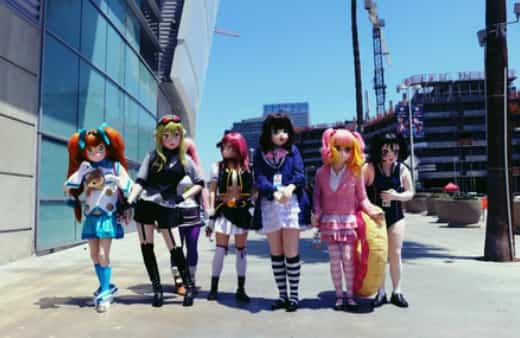The animal or cartoon character illustrated onesies have been a part of Japanese culture for decades. Europe, America and even the majority of Asia are still unaware of the fact these trendy and mainstream costumes were a common trend back in the early 90’s in Japan. The high popularity of manga and anime characters, cartoons, the kawaii culture (The ‘Cult of Cuteness’) gave birth to this concept of cute imitating onesies which soon became popular among the Japanese teenagers and children.
Author

Japan’s atypical Fashion Culture
Before diving into the history of Kigurumis, let’s look into the Japanese fashion culture first. Japan has always been known for its rich and bizarre fashion trends; these unorthodox subcultures can only be found in the streets of Japan. From body suits to rock ‘n’ style fashion to zentai, Japanese have always had a one-of-its kind subculture as a part of their local fashion industry. The popular Kawaii culture worldwide, trendy scarfs, jackets and the Japanese makeup, these are the few aspects that standout just like many other peculiar charms of Japan. The famous fashion subculture of Japan also includes:
- Lolita – the doll-like appearance of women.
- Fairy Kei – a fashion trend that incorporates dresses of pastel colors like blue and pink, highly popular among Japanese girls.
- Kigurumi – a reflection of Japan’s one of many onesie obsessions.

The First Kigurumi
In the beginning, kigurumis were not the same as they are today. In fact, the first ones were full-length costumes and masks that teenagers and children used to purchase to be able to dress as their favorite manga and anime characters. Within a short period of time, this concept started to take hold in the mega cities of Japan and soon took shape of an outrageous street fashion. Youngsters, teenagers and even babies roamed around in the streets of Tokyo, Harajuku etc. dressed as cute and funky looking characters. The concept was adopted by mega anime and manga production houses, and soon they shifted the focus of their merchandise towards the manufacturing of Kigurumis.
Kigurumis and the Japanese Pop Culture
This funky street fashion got absorbed into the Japanese fashion industry when Japanese entertainers, celebrities and especially musicians began to get addicted to this Kigurumi trend in the early 2000s. This was the beginning of Kigurumi’s introduction to the rest of the world. Pop artists started doing tours all over Japan and held Kigurumi themed concerts and musical nights. This trend received even more hype when major cities in Japan opened theme parks for tourists through which bloggers and people from West got fond of this outlandish Japanese street fashion.
Getting Rest of the World’s Attention
The Japanese street art made its way into the rest of the world including Northern America and Europe far sooner than expected. The fans of Japanese manga, anime and cartoons in the rest of the world became fan of these trendy costumes. One of the main reasons behind the sudden popularity of Kigurumis in these countries was another Japanese cultural trend called ‘Kawaii’, which had already established its popularity among US and European teenagers. And so, these cute animal imitating onesies fused smoothly with the popular Kawaii trend. In the early 2000s, anime enthusiasts in North America and Mexico helped spread this craze all over America. Anime conventions, street concerts and themed parks, all of which first originated in Japan soon started to be held in other countries too.

Kigurumis aren’t just Onesies
The word “Kigurumi” in Japanese language means “To wear a stuffed animal”. A common misconception is that these costumes are meant to be onesies illustrating a cartoon character or an animal. But that is not the case. Kigurumis were initially introduced as a part of costume for performers where they would wear full-body suits to entertain the crowd – especially the young ones – and they soon became a part of Japanese theme parks with the same intentions. Kigurumis aren’t just onesies, they are sometimes soft and squishy. However, there are four essentials that are must for a Kigurumi performer:
- Mask – it is the most essential part of the whole costume, incorporating funny ears, nose and mouth to give the look of a cartoon character or an animal.
- Body Suit or Zentai – the full-length body suit of relevant skin color is a must, this is what imitates the real character or an animal, the key here is to have an even skin tone.
- Padding – to give the required curves and girly look to the costume, as these costumes are oversized for a man to comfortably fit into and so paddings are a must.
- Performance – a decent amount of training is necessary for a kigurumi performer as it can be difficult for performers to put a show of same quality while being wrapped in these large, body-length and heavy costumes.
However, along with these four essentials, it should be known that the modern kigurumis have been molded and adopted in such a way that they are now much more of a onesie only.
The Modern Kigurumi
The modern Kigurumi is quite different from the one that originated in the streets of Japan. Many changes have taken place in the manufacturing material, variety, colors, and sizes. It has transformed from being a costume to much more. Now, we may see toddlers and newborns wrapped around in one of these soft and warm cute looking animals or cartoon characters. Another new feature that has been added to this trend are the Kigurumi accessories such as caps, watches, notebooks, mugs etc. Modern-day Kigurumi is not limited to fans of anime and manga only since its popularity has exponentially increased. Today, there is a vast variety to choose from, including funky cartoon characters and adorable animals, available in almost every major global online store.

